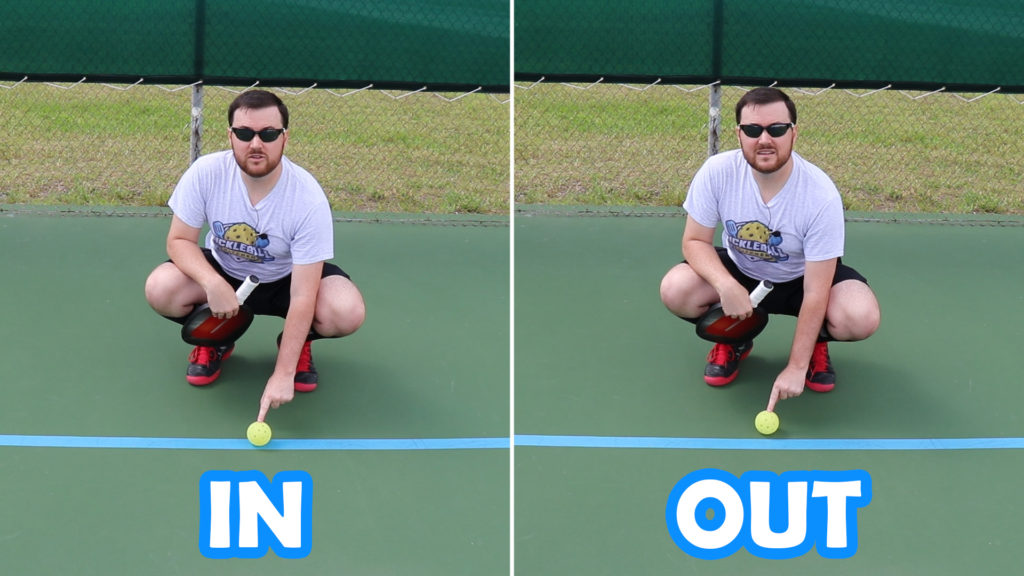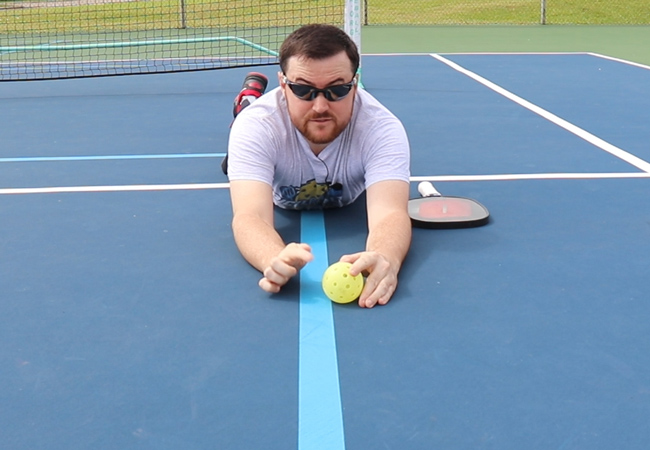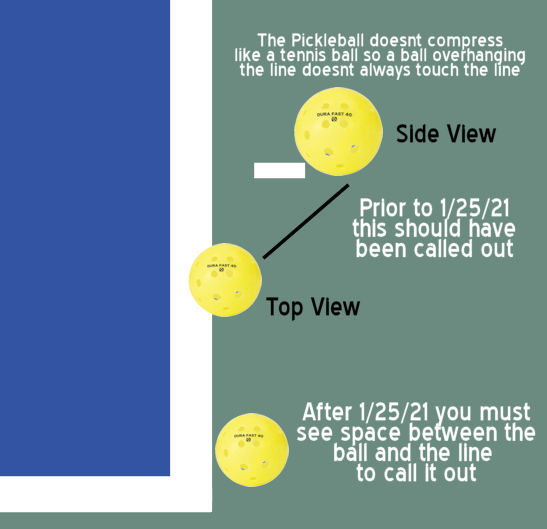Side-out in pickleball: Understanding the shift in momentum
Pickleball, a sport that’s rapidly gaining traction around the world, blends the fast-paced action of tennis, the finesse of badminton, and the strategic play of table tennis. It’s a game that cuts across age demographics, drawing in players seeking both competition and camaraderie. While a firm grasp of basic rules is essential, an understanding of specialized terms like “Side-out” can significantly elevate a player’s strategic depth and performance. The concept of a side-out in Pickleball marks not only a loss of serve but also a crucial turning point in the game. When you comprehend how and when Side-outs occur, you can adapt your gameplay, seize opportunities, and ultimately enhance your chances of winning.

What is a Side-out?
At its core, a Side-out in pickleball refers to the situation in which the serving team fails to score a point, leading to the serve switching to the opposing team. This shift is not just a mere technicality; it can dramatically alter the psychological and strategic dynamics of the match. In essence, when a serving team cannot capitalize on its opportunity to score, the momentum shifts and the power dynamic changes hands.
To better understand the ramifications of a Side-out, consider this: every match is a game of chess where each move counts. A Side-out, therefore, equates to your opponent making a successful counter-move. It transitions control of the serve to the receiving team, which can now score points.
In doubles play, this aspect of the game becomes even more intense. Only the serving team can add points to their score, making Side-outs critical. When a team loses its serve, it not only loses the chance to score but may also put their opponents in an advantageous position, further emphasizing the importance of this term.
How Side-outs occur
Understanding how Side-outs can happen is crucial for any player eager to master pickleball. Side-outs can be triggered by several specific actions, mainly related to faults committed by the serving team or the inability to legally return the ball. The various scenarios leading to a Side-out include the following:

- Serving faults: This can happen when the server hits the ball out of bounds or into the net.
- Failing to return legally: If the receiving team does not hit the ball before it bounces twice, this results in a Side-out.
- Hitting the ball out of bounds: A common mistake that leads to a point loss and a serve switch.
- Hitting the ball into the net: A simple error that echoes the fundamental aspects of serving technique and focus.
It’s important to note that a Side-out can occur on either the first or second serve in doubles play. This means that players must constantly be vigilant and ready to capitalize on every point of potential weakness.
The significance of Side-outs
The impact of a Side-out extends far beyond the immediate loss of a serve; it has the potential to change the entire course of a game. The receiving team, having just gained the serve, now has an opportunity to build momentum. This can create a psychological advantage, as players feel empowered by the change of control.
For instance, if Team A has been struggling to score, a Side-out can rejuvenate their spirits as they switch to the offensive. They can set the tone of the game, dictate play, and potentially frustrate the previous serving team. This aspect of teamwork and strategy is incredibly crucial once the serve has switched, players must work cooperatively to capitalize on their newfound control.
Moreover, a clear understanding of Side-outs enables players to develop better serving and returning strategies. By anticipating when a Side-out may occur, players can position themselves optimally and devise tactics that exploit the weaknesses of the opposing team.
Side-out strategies
Understanding how to optimize both sides of a Side-out situation can significantly empower players, transforming critical moments into opportunities.

Serving Team Strategies:
- Effective serves: Focus on serving strategies that minimize the risk of a Side-out. This could involve practicing various types of serves, such as spin serves or drop serves, to keep opponents guessing.
- Targeting weaknesses: Identifying the weaker links on the opposing team can provide ample opportunities to gain an advantage. Directing serves toward players who exhibit less skill can increase the likelihood of scoring.
Receiving Team Strategies:
- Seizing opportunities: Capitalizing on a Side-out can significantly change the game’s direction. The receiving team should be ready to switch gears, and take strategic shots that put pressure on their competitors.
- Strategic returns: Players should consider their return shots carefully to force errors from their opponents. Aggressive returns can disrupt the rhythm of the serving team’s gameplay.
Partner coordination and Side-outs
In doubles play, the relationship between partners is crucial in managing Side-outs. Communication and teamwork are essential elements in maintaining pressure on the opponent during critical game moments. When facing a Side-out scenario, partners can work closely to strategize their movements and coverage of the court.
Importance of Positioning
Effective positioning allows teams to prevent Side-outs and capitalize when they occur. For instance, if one player is serving, the partner should position themselves in a way that they can quickly respond to any returns, protecting against any weaknesses either player may have. This aspect of teamwork is vital when trying to nurture a winning strategy.
Moreover, covering the court effectively fosters a sense of unity and partnership. It allows for easy communication, ensuring both players are on the same page regarding tactics and strategies surrounding the concept of Side-outs.
Common misconceptions
Clearing up misunderstandings can significantly enhance how rookies and seasoned players approach Side-outs in pickleball.
Side-out vs. Fault
One common misconception is conflating Side-outs with faults. Understanding that a Side-out occurs when a serving team fails to score a point while a fault signifies a violation of rules is crucial. For example, a player hitting the ball out of bounds may initiate a Side-out, but if the serving team violates a rule on their serve, that’s a fault, leading to point loss for the serving team itself.
The Significance of the Serve
Players often underestimate the significance of a strong serve concerning Side-outs. A powerful and well-placed serve can allow a team to maintain control of the game and avoid the risk of a Side-out. In essence, strong serves create defensive advantages while minimizing the potential for Side-outs.
Common questions
As players dive deeper into the intricacies of pickleball, several questions often arise:
Can a player score a point during Side-out?
No, the only team that can score points is the serving team. A Side-out simply signals a switch in serving teams.
What is a “fault” in pickleball, and how is it different from Side-out?
A fault is a violation of the rules that results in a point awarded to the opposing team, whereas a Side-out is when the serving team fails to score, and the opposing team gains the serve.
What are some common strategies for playing defensively during a Side-out?
Defensive strategies include positioning properly, communicating effectively with one’s partner, and trying to anticipate the serve or return shots from the opposing team.
How does the concept of Side-out in pickleball compare to similar rules in other racquet sports?
Similar to tennis rules, where losing a point results in a change of serve, Side-outs in pickleball ensure that only the serving team can score, maximizing the strategic importance of each serve.
Conclusion
In summary, the concept of a side-out in pickleball is fundamental in pickleball, shaping the flow of points and game strategy. Understanding the mechanics and significance of Side-outs allows players to develop tailored strategies, anticipate game shifts, and leverage opportunities effectively. By mastering this crucial aspect of the game, you can enhance your overall gameplay, adaptability, and enjoyment on the court. Embrace Side-out as an essential part of your strategy, and watch as your skills, confidence, and love for this sport flourish.
